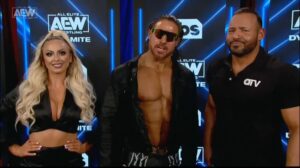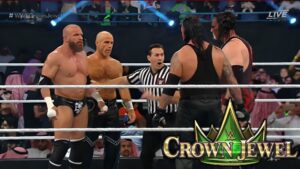Muhammad Ali is arguably the biggest name in sporting history. Ali transcended the sport of boxing like no other (at least until Mike Tyson) and became a world-renowned celebrity. Though initially disliked by much of the paying audience (more on that later), Ali would become a beloved figurehead of American popular culture. Something of an interesting, under-discussed topic is the impact Ali had on professional wrestling – how he inspired so many within the industry, some of whom would go on to be global stars themselves. Even less covered is the impact professional wrestling had on Ali himself. This article will explore the decades-long relationship between Muhammad Ali and professional wrestling and perhaps pitch an argument for his inclusion in the celebrity wing of the WWE Hall of Fame.

Muhammad Ali: Early Career
Muhammad Ali was born Cassius Marcellus Clay Jr. on January 17th, 1942 in Louisville Kentucky. Clay would begin boxing training at twelve years of age, after another child stole his bicycle. The young Clay told then trainer, Joe Martin, that “if I find the kid who stole my bike, I’m gonna whoop him”. Unfortunately, Clay would never recover the stolen bike. However, the loss of the now famous red bike would begin a boxing career affectionately dubbed “the greatest of all time”.

Just six years later (1960), Clay, fighting as a light-heavyweight, would win an Olympic gold medal at the Rome Olympics. Despite becoming an Olympic champion, Clay would not receive his deserved hero’s welcome back home. Segregation still rife within Louisville, Clay would be told – upon trying to purchase a hamburger – that “we don’t serve negroes”. Clay would reply “I don’t eat them either, just gimme the hamburger”. The racist treatment of Clay and other young African-Americans would lead to Clay joining the Nation of Islam. This would, of course, lead to the man formerly known as Cassius Clay becoming Muhammad Ali.

Ali vs Liston
Muhammad Ali was a member of the Nation of Islam – a sect of Islam whose objective it was at the time was to establish a new, separate nation for black Muslims. This is of course not reflective of the core beliefs of traditional Sunni and Shi’a Islam. Clay would make the transition to Ali after the infamous first Sonny Liston fight (1964). Ali, a huge underdog going into the fight, scored one of the all-time great upsets – causing Liston to surrender in the seventh round. To put the scale of the defeat into context: Johnny Tocco, who trained Liston, as well as Mike Tyson and George Foreman, maintains that Liston was the hardest hitter of the three. He was undefeated and perceived invincible. Boxing punters were so convinced of this that they believed Liston’s dominance to be damaging to the sport.

Ali was a lanky (6″3), thin heavyweight who could move lightning fast. Though he was undefeated himself, his chances of beating Liston – 7/1 – were virtually non-existent. Ali would beat Liston in this fight and then dominantly knock him out in the 1965 rematch – with the infamous “phantom punch”. Over the course of the two fights, Ali successfully established himself as the ultimate trash talker. He would famously describe his fighting style as “float like a butterfly, sting like a bee. Your hands can’t hit what your eyes can’t see.” He would declare that he was “handsome, young and pretty and can’t possibly be beat.” Trash-talking would very much become a staple of Ali’s character.
“Sonny Liston is nothing. The man can’t talk. he can’t fight. The man needs talking lessons. he needs boxing lessons. And since he’s gonna fight me, he needs falling lessons.”
Ali: Inspiring Wrestling Legends
Muhammad Ali’s legendary trash talking has had a profound effect on both pro-wrestling and sport as a whole. When UFC‘s Conor McGregor began the cocky, brash routine, he was compared to Ali. When current lineal and WBC Heavyweight Champion, Tyson Fury, began calling prospective opponents “big dosser”, he was compared to Muhammad Ali. Cristiano Ronaldo‘s early-career cockiness, too, was compared to Ali’s. In sporting history, there is perhaps no one who has more adopted the Muhammad Ali persona than Dwayne “The Rock” Johnson. The self-proclaimed “People’s Champion” actually borrowed the moniker from Ali himself – with his blessing.
Up until Ali’s death on June 3rd 2016, Rock only followed one person on Twitter – Muhammad Ali. Ali was, to Rock, something of a childhood hero. More than anyone – besides maybe his father, “Soulman” Rocky Johnson – Ali most shaped the direction Rock’s character would take. Perhaps a coincidence, Rock’s first big break was with the Nation of Domination – a faction heavily based on the Nation of Islam, of which Ali was a member. Ali would call opponents “bum”, Rock would use “jabroni”. Ali would “whoop” them, Rock would “lay the smackdown”. Both would become the “People’s Champion” of their respective sport. It is safe to say that without Muhammad Ali, Dwayne’s character might not have existed – certainly not in the form it took.
“He [Muhammad Ali] has been an inspiration of mine for many years. I first met him when I was six years old, in New Zealand… I’m crying because I didn’t know I’m in the presence of greatness. I grew up loving his greatness, his humanity. His humility. Loving his athletic prowess… his coolness and his swag.” – Dwayne “The rock” johnson
In inspiring wrestlers such as The Rock to talk trash on the microphone, Ali’s connection with wrestling came full circle. A little known fact about Ali is that he grew up as a big fan of pro-wrestling. Furthermore, he grew up to become a big fan of Gorgeous George. That is where the circle began.

Ali: Inspired by Wrestling Legend
Until Gorgeous George (George Raymond Wagner), professional wrestling was about the in-ring action. Until Muhammad Ali, professional boxing was about the in-ring action. George – who achieved super-stardom with his over-the-top, trash-talking heel persona – would change professional wrestling forever and inspire the likes of Muhammad Ali in the process. Fellow wrestling legend, Lou Thesz, would recall how prior to George taking on the “Gorgeous George” gimmick persona, “he could never draw a fan”. However, fans would later flock to arenas to see George get beat. At the time, no one liked a trash-talker and would pay good money to see him humbled. The same, too, can be said of Ali; whose early career trash-talking would inspire boxing fans to turn up and see him get beat.
https://www.youtube.com/watch?v=7PNsLB7gyiw
Ali famously rejected being drafted into the Vietnam War on the basis of race and religion – thus cementing his place in history as an iconic conscientious objector. Of course, at the time, rejecting the draft was one which made him one of the country’s most polarizing figures. After a three-year suspension (1967-1970), Ali would return and in the eyes of many, he was something of a heel. Just six years later, having reclaimed his world title, having defeated the likes of Joe Frazier and George Foreman, Ali would again get involved in professional wrestling. Physically this time and with Japanese legend, Antonio Inoki.

Muhammad Ali vs Antonio Inoki: Wrestling vs Boxing
At the time, Antonio Inoki was staging exhibition fights against champions in other sports. The idea served as a precursor to the UFC and stands as one of the early examples of televised mixed martial arts. The goal was to prove the legitimacy of pro-wrestling and pro-wrestlers. Of course, Muhammad Ali – the boxing World Heavyweight Champion – would accept the challenge. Ali would promote the fight in the best way Ali could; talk trash and establish himself as something of a heel – to sell tickets to the fight. He did this by touring some of the wrestling territories, with hilarious results. In New York, he feuded with Buddy Wolfe. In Minneapolis, he got physical with Gorilla Monsoon – receiving an Airplane Spin for his trouble.
He dubbed Inoki “The Pelican”- continuously mocking the stern, pelican-like features of Inoki’s expression. He would talk about how wrestling was inferior to boxing; how he – a boxer – was coming over into the world of professional wrestling to beat the wrestler in his own yard. Ali worked tirelessly to promote the fight and successfully became something of a pro-wrestling heel. Coming off of the legendary Rumble in the Jungle fight versus George Foreman, Ali was arguably the most famous man on the planet. Therefore building excitement for the exhibition wasn’t too difficult. The fight was, admittedly, a complete sham.
In pitting a wrestler against a boxer, it is difficult to find a way to make the fight fair. The initial ruling was that both men are allowed to punch both on their feet and on the ground. Greco and Judo takedowns are allowed, though leg holds are barred. The fight can be won by knockout or pinfall. Ropebreaks permitted. This would lead to a downright laughable match-up, where Inoki would spend the fight on his back – kicking at Muhammad Ali’s legs, whilst Ali tried to find ways to cope with the strategy. Inoki’s strategy would lead to Ali requiring immediate medical attention on his legs, one of which came close to being amputated. The fight, a widely anticipated spectacle pitting two forms of martial arts against each other, failed to live up to the hype.
Though the Inoki/Ali fight would go down in history as a dull affair, it was not without influence. In the hugely popular Rocky III, boxer Rocky Balboa took on pro-wrestler Thunderlips (played by Hulk Hogan) in a similar, though livelier bout. The scene was also inspired by boxer Chuck Wepner versus Andre the Giant, which was on the under-card of the Ali versus Inoki event.

Ali Comes to WrestleMania I
He would return to pro-wrestling after his boxing career was dramatically ended in the “Drama in Bahama” (1981), a fight against Trevor Berbick. Ali, at this point suffering from the early stages of Parkinson’s Disease – which he would fight for the remainder of his life – would be announced as the special guest referee for the main event of WrestleMania I. The match pitted the team of Mr. T and Hulk Hogan (WWF Champion) against Roddy Piper and Paul Orndorff. Ali would ensure that the babyfaces won and that “Cowboy” Bob Orton didn’t interfere in the match. He would receive a hero’s welcome from the crowd. Ali, at this point, was now a babyface for life – his place as pop culture icon cemented in history forever.
Muhammad Ali’s impact on professional wrestling is a certainty. A larger than life personality who borrowed his charisma from Gorgeous George and then lent it to The Rock. A heavyweight boxer who adored wrestling so much he made numerous appearances over a period spanning decades. If any non-wrestler is deserving of a spot in the celebrity wing of the WWE Hall of Fame, it is the People’s Champion.
Stay tuned to the Last Word on Pro Wrestling for more on this and other stories from around the world of wrestling, as they develop. You can always count on LWOPW to be on top of the major news in the wrestling world, as well as to provide you with analysis, previews, videos, interviews, and editorials on the wrestling world. WWE fan? You can check out all of your favorite matches – as well as Muhammad Ali’s WrestleMania I appearance – on the WWE Network.






